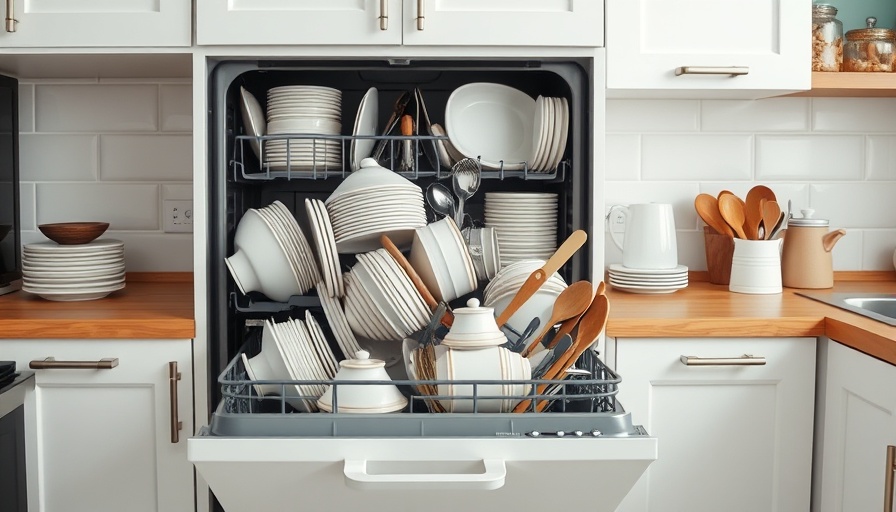
Why Less is More in the Dishwasher
With busy lives, many of us tend to overload our dishwashers to save time and effort. However, what feels like a smart efficiency play can actually backfire. The truth is, cramming too many dishes into one wash cycle not only reduces cleaning effectiveness but also increases energy and water consumption, which is a double whammy on your utility bills!
The Science of Dishwashing
Most modern dishwashers operate based on targeted cleaning distribution, meaning that plates, bowls, and utensils need adequate space for optimal detergent and water circulation. When you overload your dishwasher, dishes block the spray arms and the jets fail to reach every surface. Think of it like trying to dry a pile of wet laundry in a cramped dryer; it just doesn’t work well.
Understanding Water Usage
You might think cramming all of your dirty dishes into one cycle instead of running multiple loads saves water. However, the United States Environmental Protection Agency states that a standard dishwasher uses about 6 gallons of water per cycle. When it fails to clean properly due to overloading, you might end up needing an extra rinse cycle, doubling your water usage in some cases. It’s like throwing good money after bad!
Future Predictions: Dishwashers on the Rise
As smart home technology continues to evolve, the next generation of dishwashers promises even more convenience and efficiency. Features like sensors that detect dirtiness levels and adjustable racks that customize spacing will revolutionize how we view loading practices. But, regardless of how advanced our machines become, understanding the fundamentals of effective loading remains crucial.
Counters and Realities: A Diverse Perspective
Some may argue that their dishwashing skills can handle the overload just fine—"I haven't had any dirty dishes after cramming my dishwasher!" While individual experiences can vary, it is important to note that just because it works sometimes does not mean it’s the best practice. The risks of damaging delicate dishware or the machine ultimately overshadow temporary conveniences and perceived success.
Practical Insights for Effective Loading
To maximize efficiency, consider a few practical insights. Start by grouping items in similar sizes—place larger plates at the bottom and smaller mechanisms like cups and bowls on top. Face items inward to ensure they catch spray effectively, and make sure nothing obstructs the jets. If extensive cleaning is needed, consider running a short cycle first to pre-rinse dishes before the full wash. These efficiency tips aren’t just helpful; they promote sustainability, reducing your environmental footprint.
How Overloading Might Make You Feel
There’s a unique satisfaction in a clean kitchen, and overloading your dishwasher may seem like a shortcut to achieving that. However, when the reality is an incomplete clean, what could have been a gratifying task becomes a source of frustration. Instead of saving time, you risk additional cycles that extend your cleanup process. Shifting your approach to lower, more organized loads can bring unexpected joyful clarity to your post-meal duties.
Conclusion: Embrace Efficient Dishwashing
Understanding the true cost of overloaded dishwashers can save you from frustration down the line. Lowering the load isn’t just about keeping your dishwasher happy; it’s about preserving your precious dishware and minimizing energy waste. Dive into your next dishwashing endeavor with these insights, and you might find that the journey towards a clean home begins with smarter, more efficient choices.
 Add Row
Add Row  Add
Add 



Write A Comment